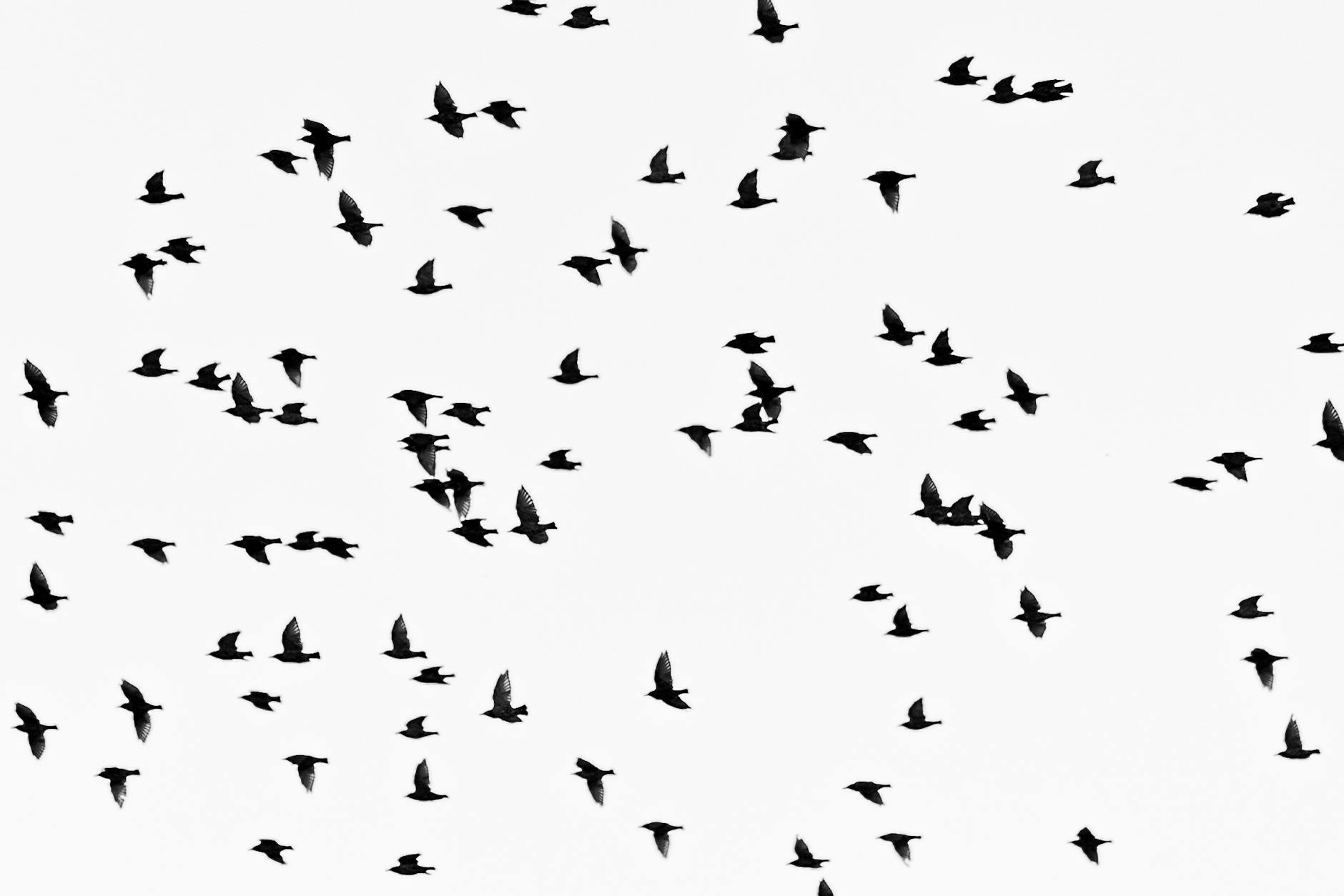The fascinating world of collective nouns for birds reveals the richness and creativity of the English language. These special terms not only describe groups of different bird species but also often reflect their behavior, appearance, or historical perceptions.
Common Collective Nouns for Birds
The most frequently used collective nouns for birds can be categorized based on their characteristics and behaviors[1]:
Water Birds
- Ducks: A raft, brace, or paddling of ducks
- Geese: A gaggle (on ground) or skein (in flight)
- Swans: A bevy or wedge
- Penguins: A colony, waddle, or rookery
Predatory Birds
- Hawks: A boil, cast, or kettle
- Eagles: A convocation or aerie
- Owls: A parliament or wisdom
- Vultures: A wake or venue
Song Birds
- Finches: A charm
- Larks: A bevy or exaltation
- Sparrows: A host or tribe
- Starlings: A murmuration or chattering
Notable Examples with Historical Context
Some of the most intriguing collective nouns have fascinating origins[2]:
Murder of Crows
This term emerged from medieval folklore, where crows were often associated with death and misfortune. Example: “A murder of crows circled ominously above the abandoned farmhouse.”
Parliament of Owls
Reflecting the perceived wisdom of owls, this term draws parallels to human governing bodies. Example: “The ancient oak tree hosted a parliament of owls during the full moon.”
Murmuration of Starlings
Named after the mesmerizing sound and sight of thousands of starlings flying in coordination. Example: “At dusk, a murmuration of starlings created intricate patterns across the evening sky.”
Specialized Collective Nouns
Seasonal Groups
Different terms apply depending on the birds’ activities and time of year:
- Nesting: A colony or rookery
- Migration: A flight or passage
- Feeding: A congregation or assembly
- Resting: A roost or perch
Size-Based Classifications
The number of birds can influence the collective noun used:
| Group Size | Collective Term | Example Usage |
|---|---|---|
| Small (2-5) | Brace or Pair | A brace of doves |
| Medium (6-20) | Flock or Party | A party of jays |
| Large (20+) | Host or Cloud | A host of sparrows |
Usage in Literature and Poetry
Writers have long employed these collective nouns to add depth and imagery to their work. Consider this quote from Shakespeare:
“As that ungentle gull, the cuckoo’s bird,
Useth the sparrow…”
Modern authors continue this tradition, using these terms to create vivid imagery and metaphoric connections.
Contemporary Applications
These collective nouns appear in:
- Nature Writing: Scientific observations and field guides
- Children’s Literature: Educational books and stories
- Poetry: Creative expressions and nature verse
- Wildlife Documentation: Professional studies and reports
Regional Variations
Different English-speaking regions may use varying terms:
British English
- Covey for partridges and grouse
- Bevy for quail
- Nye for pheasants
American English
- Bunch for waterfowl
- Gang for turkeys
- Company for parrots
Example Sentences with Collective Nouns
- “The majestic parliament of owls perched silently in the ancient oak tree.”
- “A graceful skein of geese flew overhead in perfect V-formation.”
- “The photographer captured the massive murmuration of starlings dancing across the sunset sky.”
- “A noisy gaggle of geese waddled across the village green.”
- “The peaceful bevy of swans glided across the misty lake at dawn.”
- “A watchful convocation of eagles surveyed the valley from their mountain perch.”
- “The cheerful charm of finches brightened the winter garden.”
- “A raucous murder of crows descended upon the freshly plowed field.”
- “The elegant wedge of swans made their annual return to the sanctuary.”
- “A bustling colony of penguins huddled against the Antarctic winds.”
- “The soaring kettle of hawks circled high above the canyon.”
- “A chattering company of parrots filled the rainforest canopy with color.”
- “The scattered covey of quail emerged from the tall grass at dusk.”
- “A proud parade of peacocks displayed their feathers in the garden.”
- “The swift flight of swallows darted through the evening air.”
- “A restless venue of vultures gathered near the cliff edge.”
- “The melodious host of sparrows filled the morning with song.”
- “A drowsy roost of pigeons settled on the cathedral spire.”
- “The playful paddling of ducks explored the pond’s edges.”
- “A majestic team of pelicans soared along the coastline.”
Key Takeaways
Collective nouns for birds represent a unique aspect of the English language, combining practical description with poetic imagery. These terms enhance our ability to describe natural phenomena while preserving historical and cultural connections. Understanding and using these collective nouns properly enriches both written and spoken communication, particularly in nature writing, poetry, and scientific observation.
Citations:
[1] https://backyardchirper.com/blog/collective-nouns-for-groups-of-various-birds/
[2] https://factanimal.com/fun-stuff/collective-nouns-for-birds/
[3] https://allcollectivenouns.com/fascinating-collective-noun-for-birds/
[4] https://blog.gardenwildlifedirect.co.uk/collective-nouns-for-birds/
[5] https://www.birdspot.co.uk/culture/collective-nouns-for-birds
[6] https://www.hitbullseye.com/Collective-Noun-for-Birds.php
